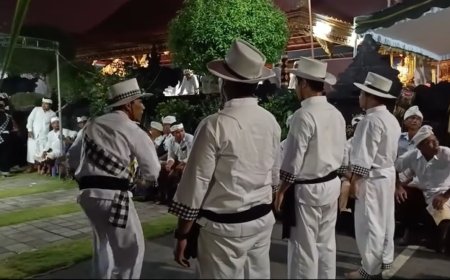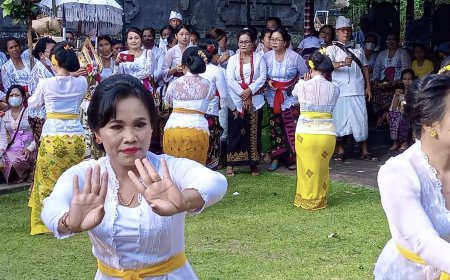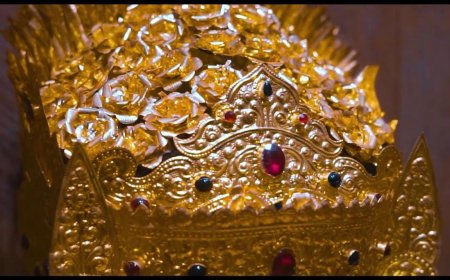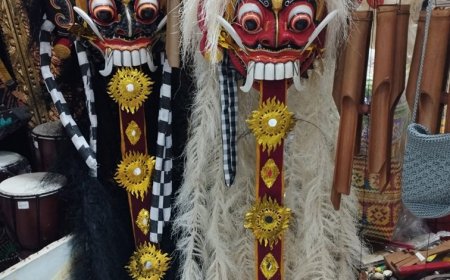The Rejang Pande Suci Wedana Dance: A Sacred Dance that Achieved Intellectual Property Registration
The Rejang Pande Suci Wedana Tihingan dance is a sacred ritual dance created in 2016 at Pura Penataran Dalem Pande Urip Wesi Tihingan. This dance holds deep religious significance and is only performed by young women from the Pande caste. This article also explores the background, ritual preparations, accompanying gamelan music, and the social and religious functions of the dance within the context of the Pande community in Bali.
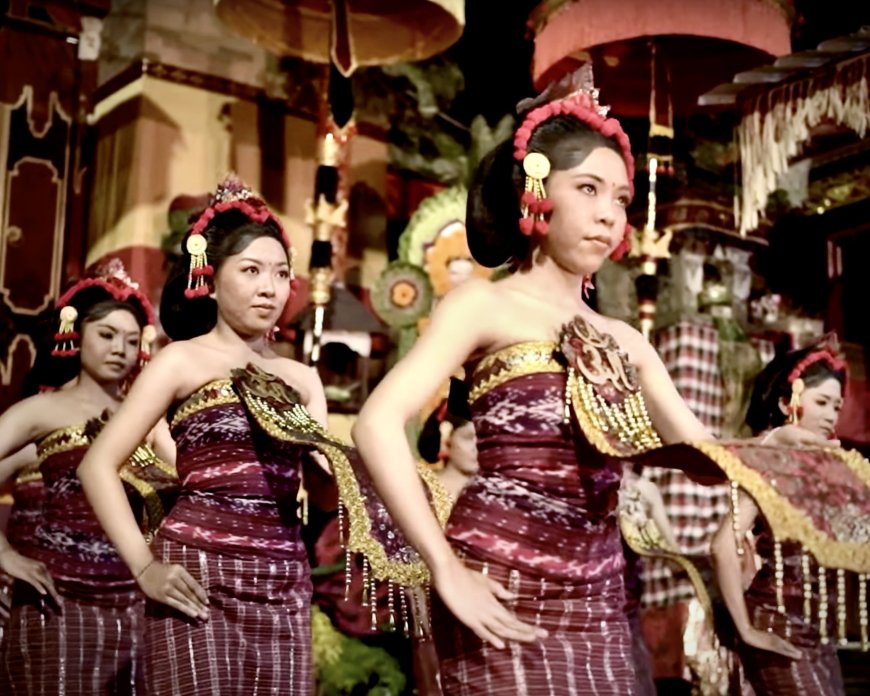
The Rejang Pande Suci Wedana Tihingan dance is a form of dance art that has deep meaning and value. Created in 2016 as part of the ngenteg linggih work at the Penataran Dalem Pande Urip Wesi Tihingan Temple, this dance has strong cultural roots and religious values.
Background
The Rejang Pande Suci Wedana Tihingan dance was born as a result of the pawisik declaring "Rejang Pinaka Purification" by Ida Betara Kawitan to the pamucuk holders at the Penataran Dalem Pande Urip Wesi Tihingan Temple. This initiative was taken by directing the temple workers and all the temple builders to create a dance which was later named "Suci Wedana."
Restrictions and Uniqueness of the Rejang Dance
Different from the Rejang dance in general in Bali, the Rejang Pande Suci Wedana Tihingan dance can only be danced at Pande Temple and only by ex-Pande women who are still teenagers (Truni Yowana Pande). This is in accordance with the awig-awig (rules) at the local temple. The number of dancers ranges from 5, 6, 9, and eleven people, called Truni Yowana Pande or Pawintenan Brahma Angga.
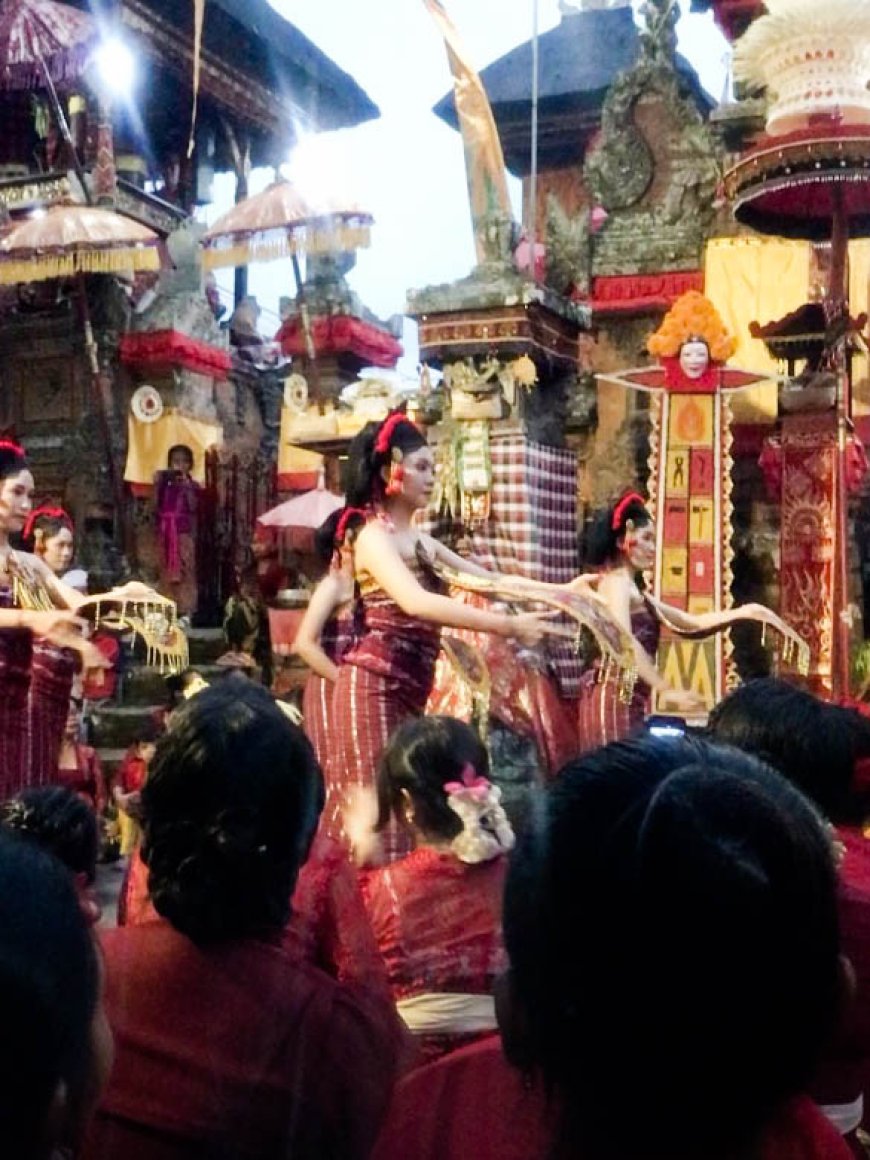
Rejang Pande Suci Wedana Dance Performance at Penataran Pande Urip Wesi Temple (Photo Source: Editorial Collection)
Preparation Process and Spiritual Meaning
Before the dance begins, dancers undergo a preparatory ritual involving the segeh Agung ceremony. This ceremony is intended to pay tribute to the "taksu apsari/widyadari" which is inherent in the dancer. This dance clothing or costume involves a headdress, body decoration such as ankin, lama tapih/kamen, and a kerchief.
Accompanying Instruments
The Rejang Pande Suci Wedana Tihingan dance is accompanied by a set of gamelan semarandana. These instruments include trompong and reong, kendang (wadon), gangsa, kantilan, kenyur, jublag, jegog, kempur, klentong, gong, kicik, and gentorang.
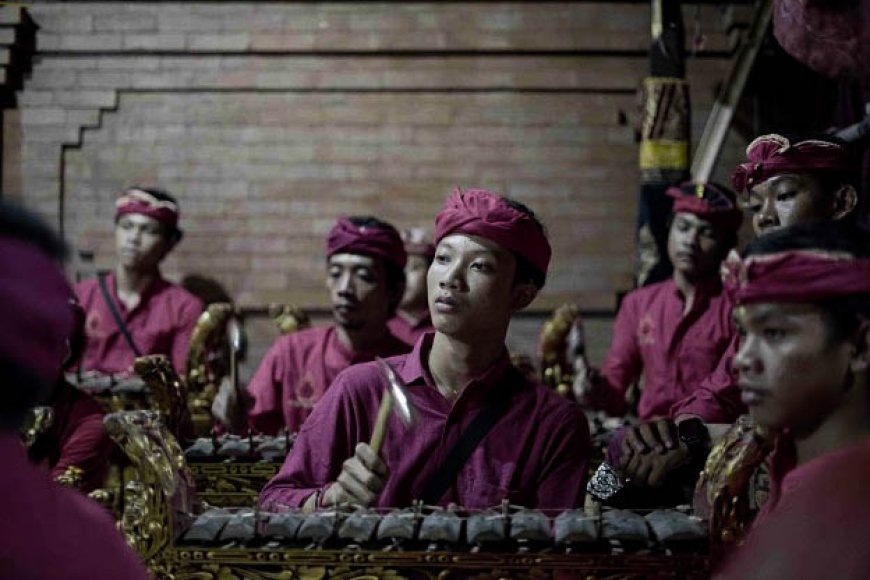
Dance Accompaniment with Gamelan Semarandana (Photo Source: Editorial Collection)
Social and Religious Functions
Religiously, this dance is a mandatory part of the piodalan (deity yadnya) ceremony at the Penataran Dalem Pande Urip Wesi Temple, which is held every six months. This dance is considered to protect the sanctity of the temple and plays an important role in purifying the Penataran Dalem Pande Urip Wesi Temple area. Apart from that, in a social context, this dance shows the existence and identity of the Pande residents in Tihingan Village.
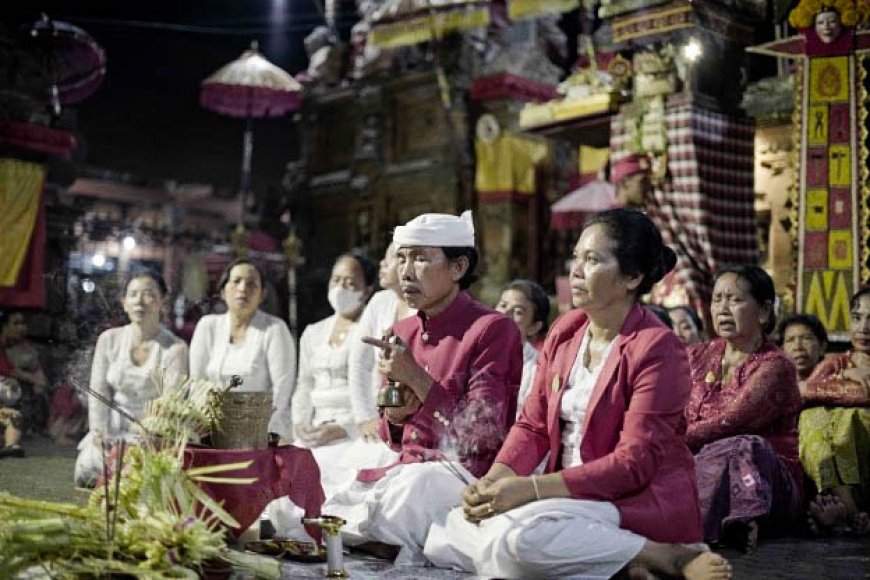
The purpose of the Rejang Pande Suci Wedana Dance is to purify the temple (Photo Source: Editorial Collection)
Deep Meaning
In general, the Rejang Pande Suci Wedana Tihingan dance represents the goddess Saraswati as the magic of the God Brahma, who came down to earth to purify the area of the Penataran Dalem Pande Urip Wesi Temple. However, in the movements and clothing of this dance there is a special meaning that strengthens the religious and cultural values that are maintained through this sacred dance.



































